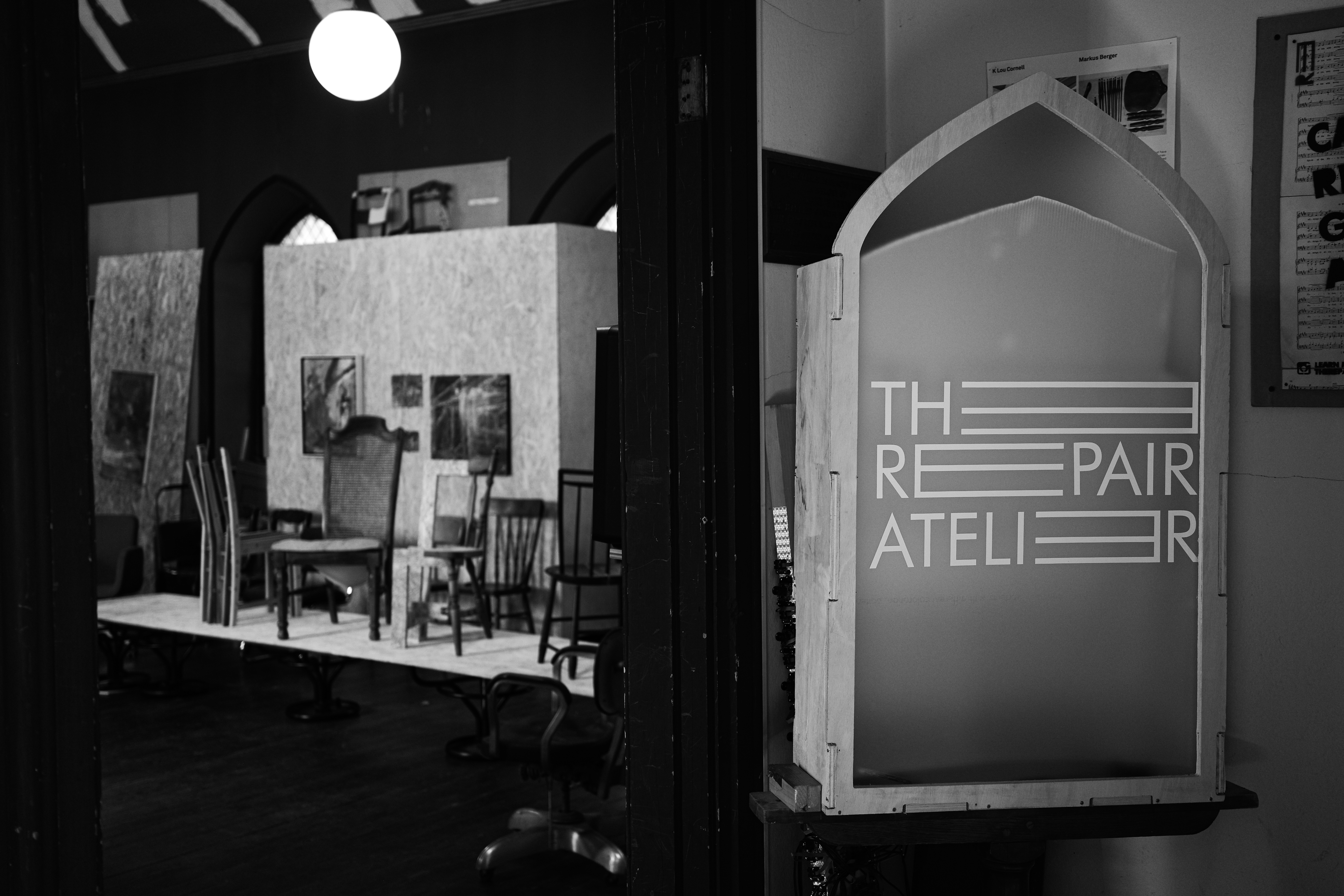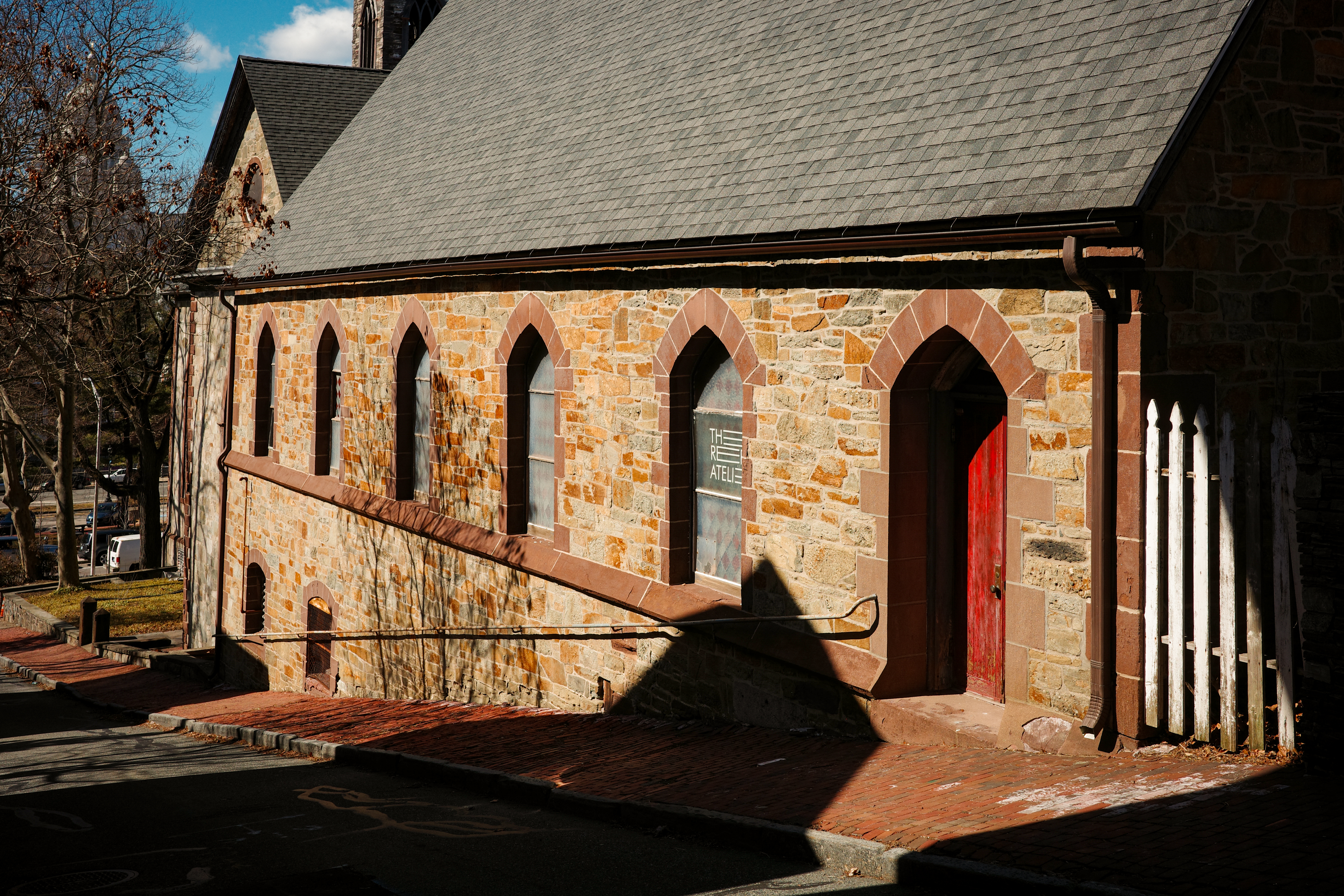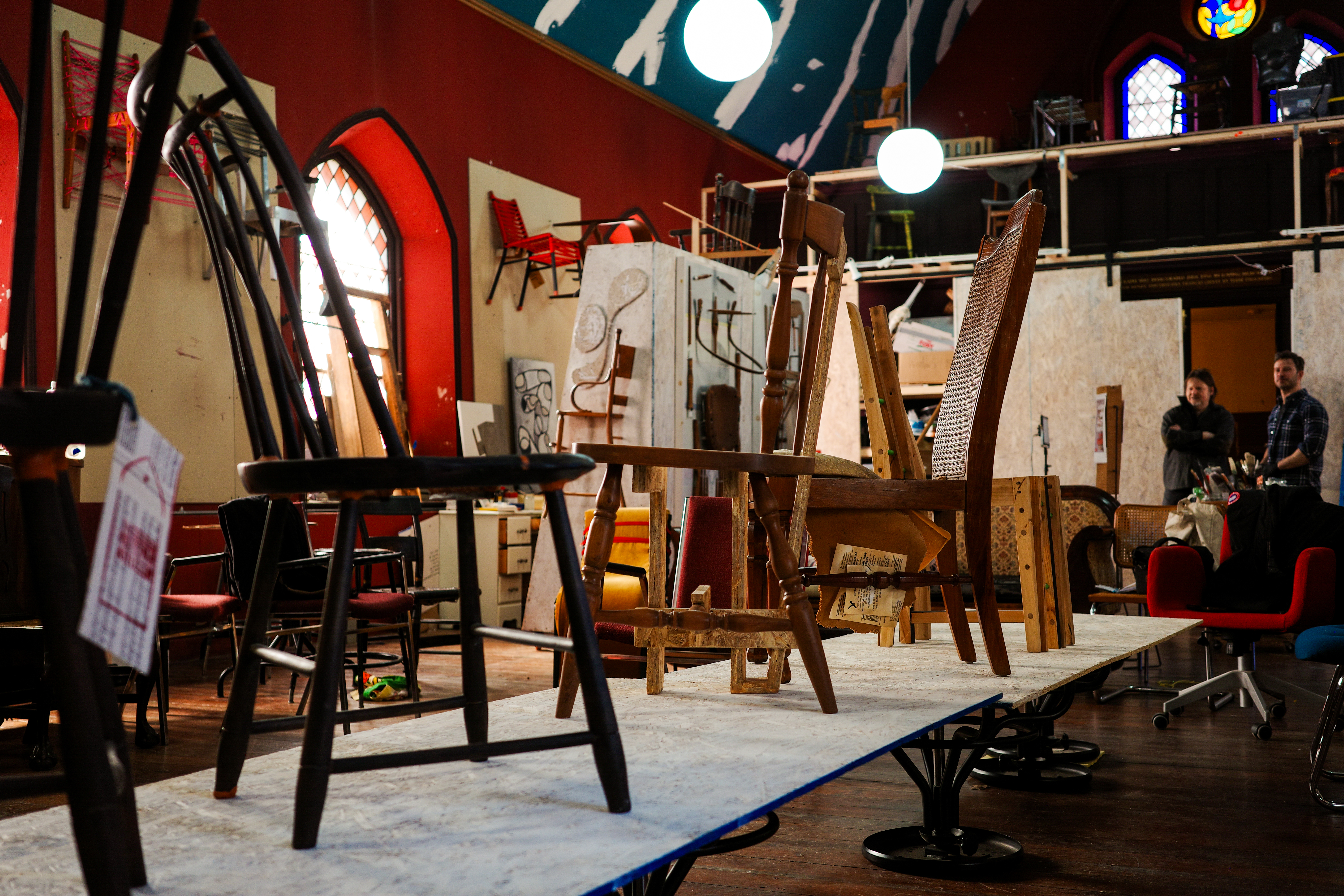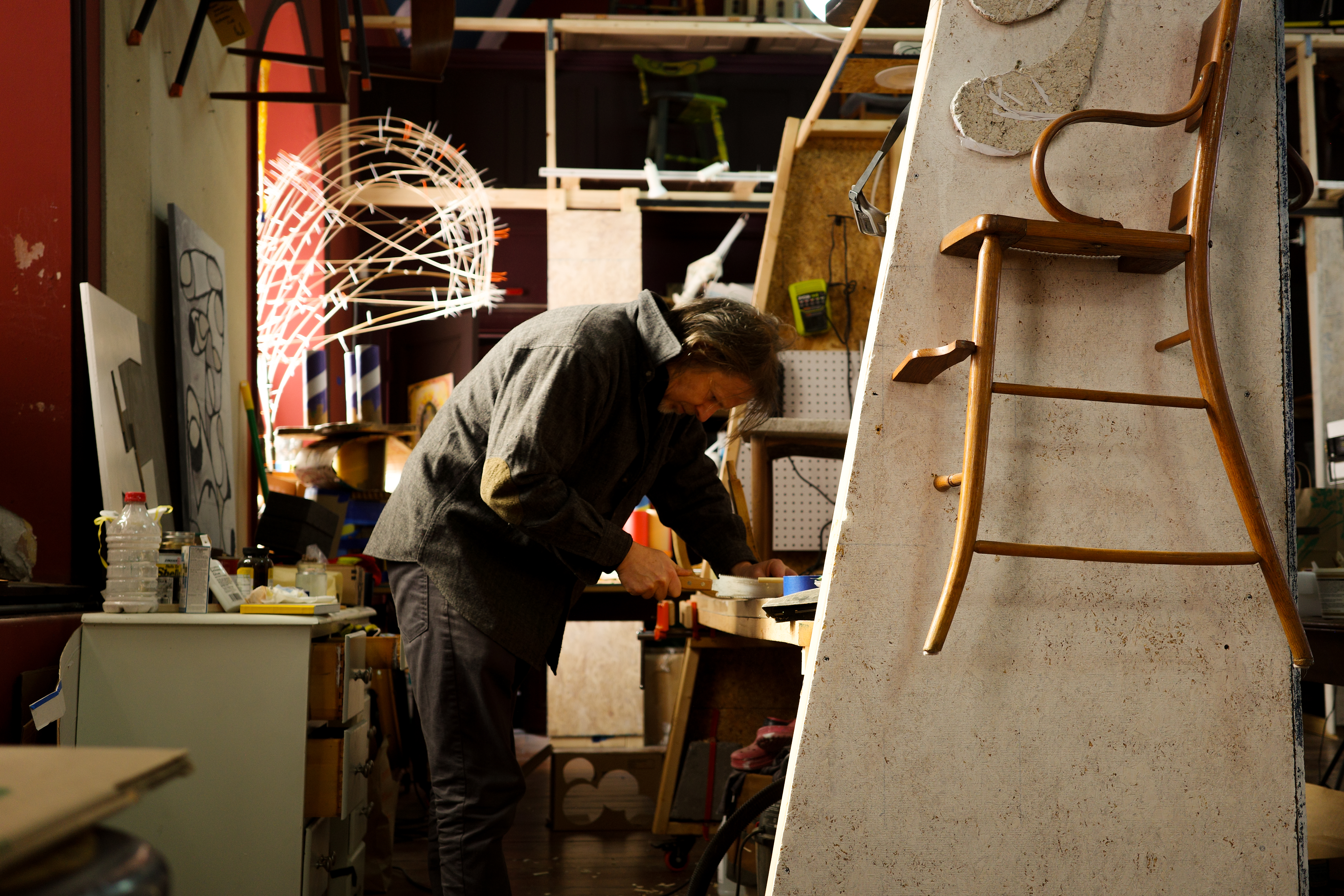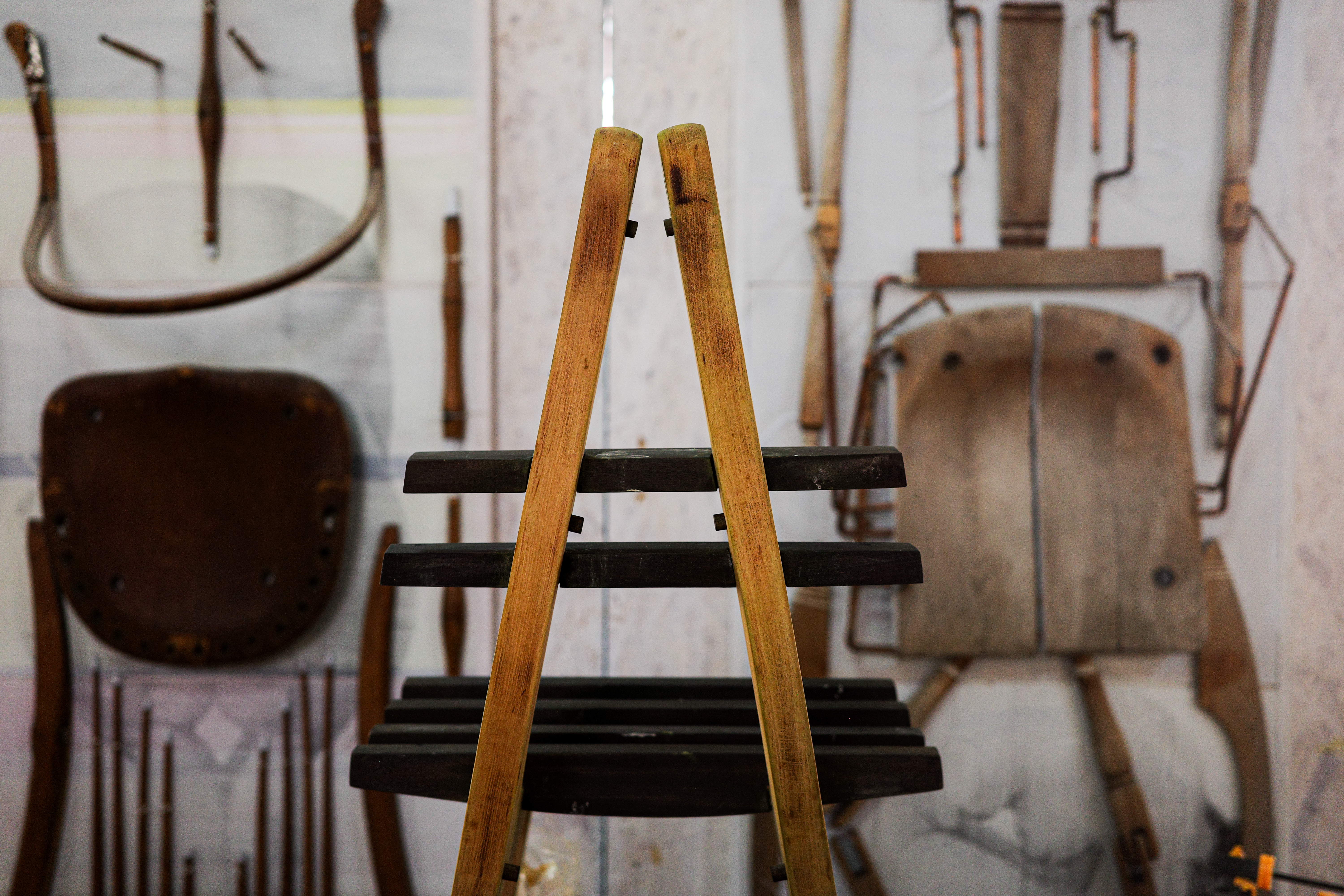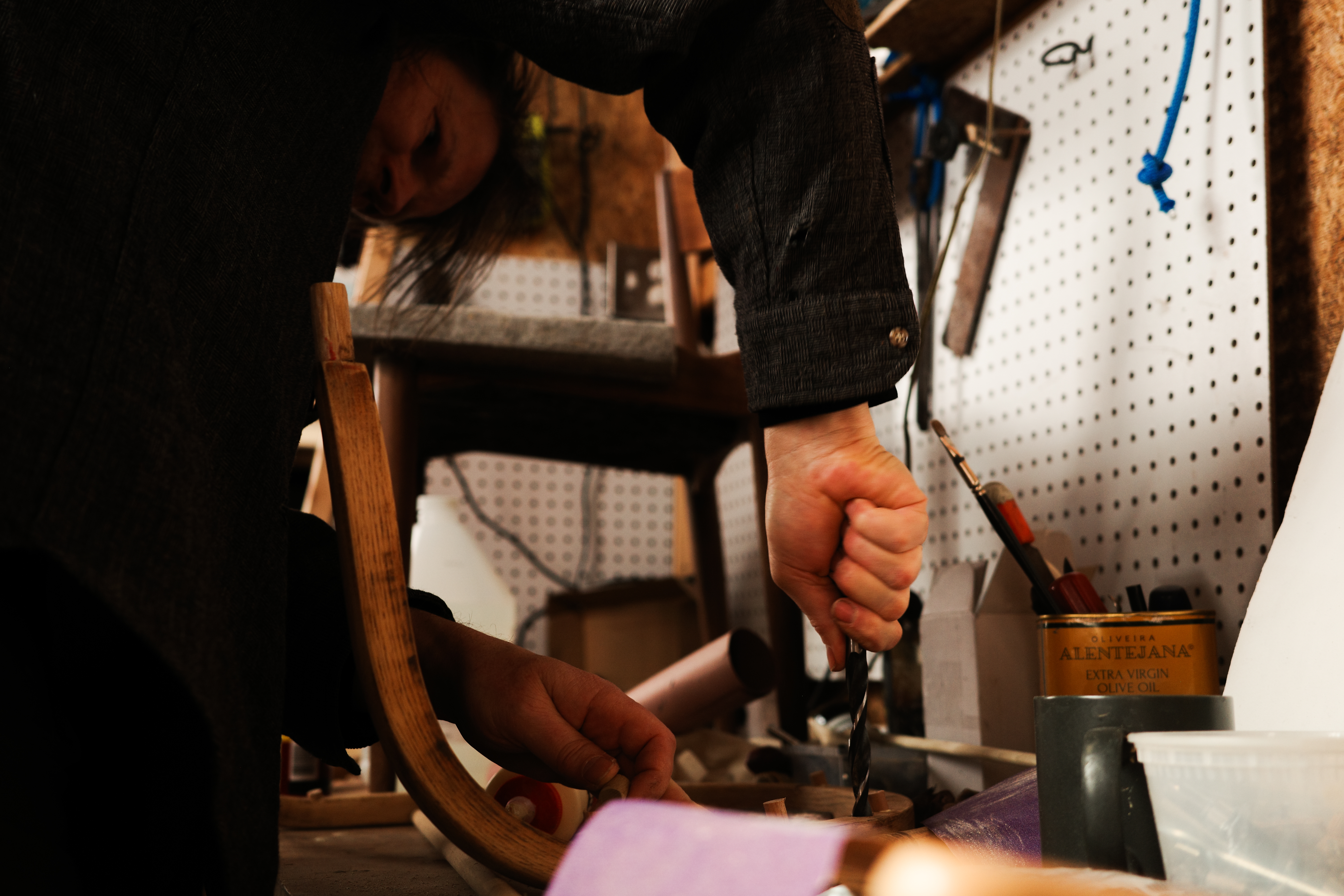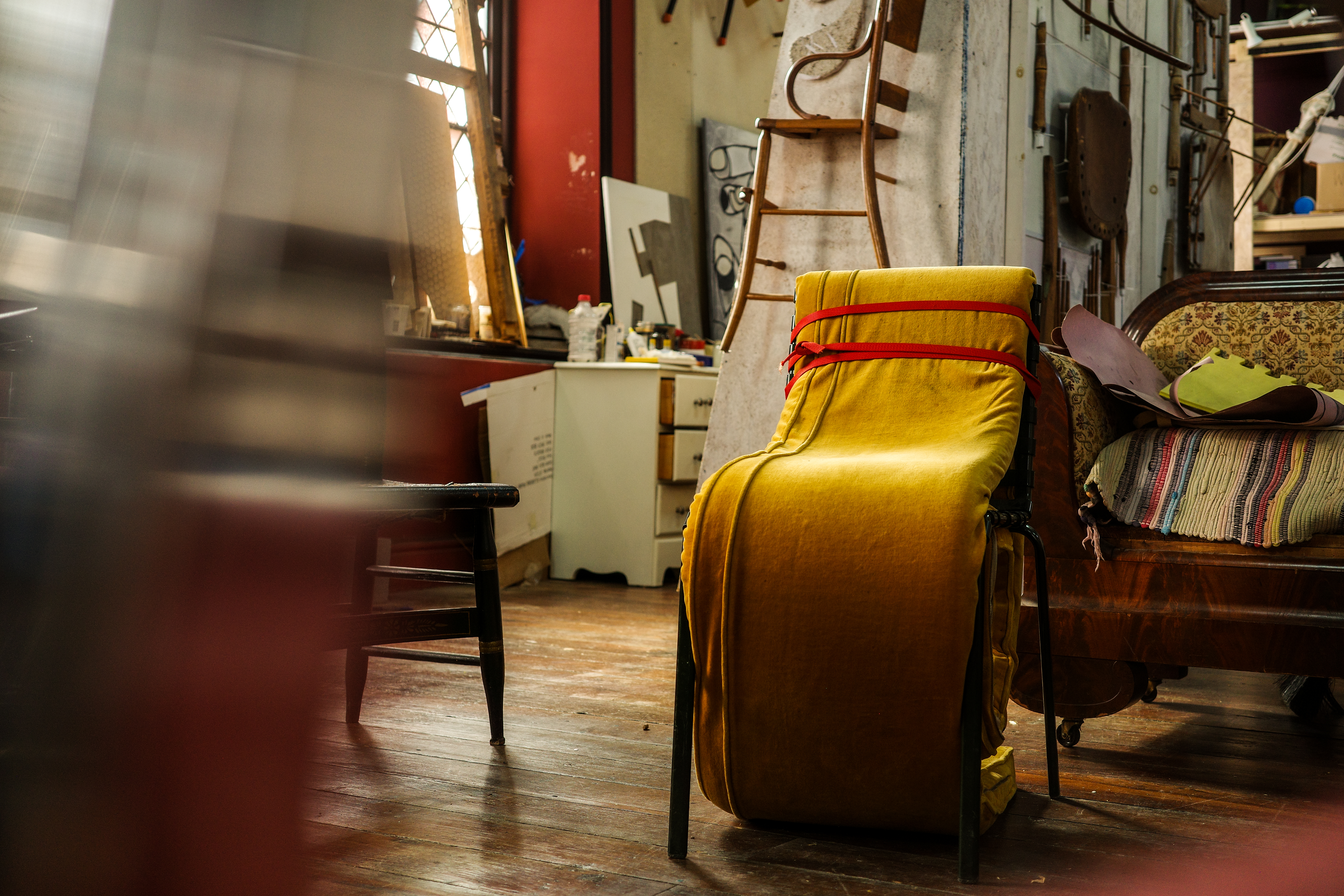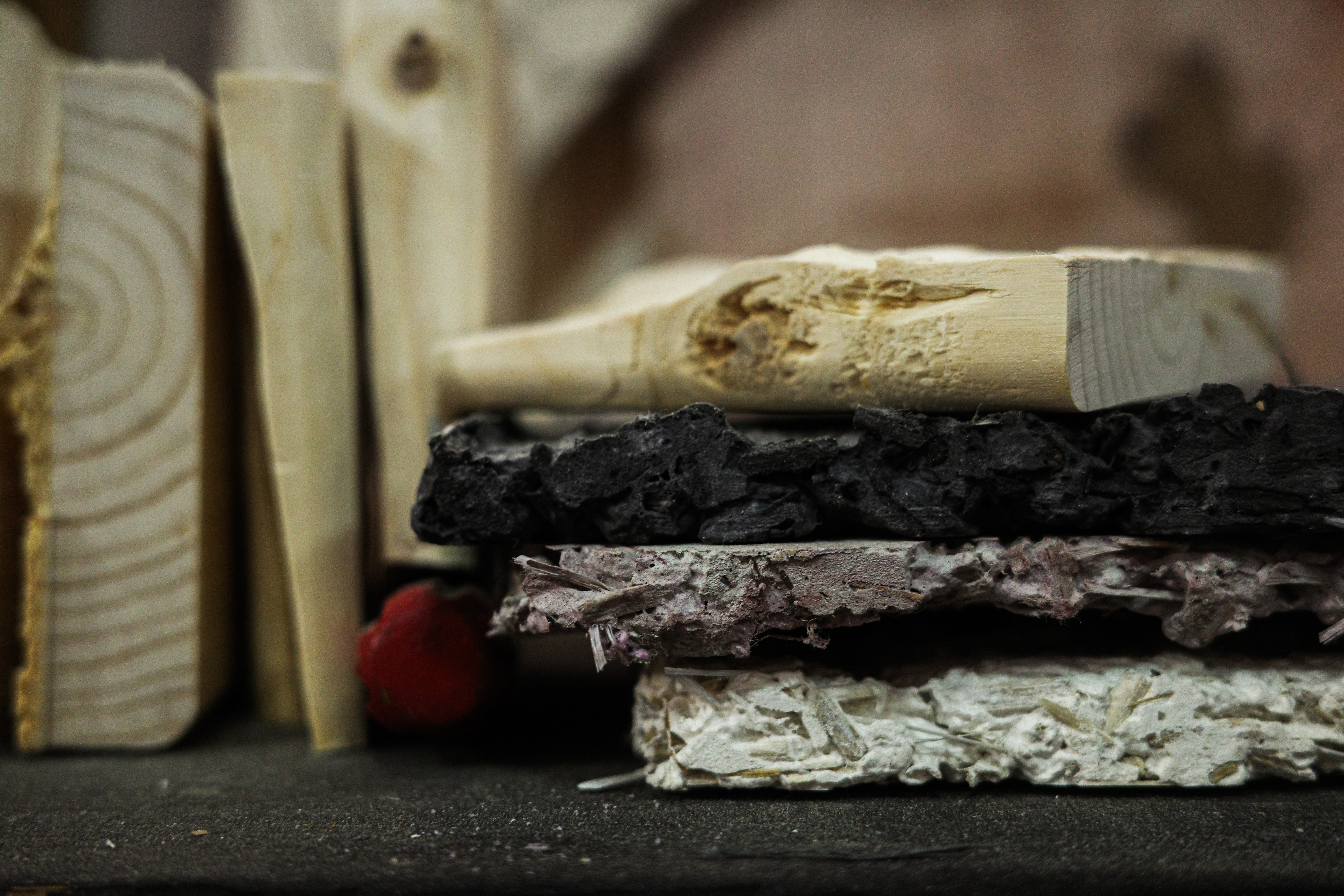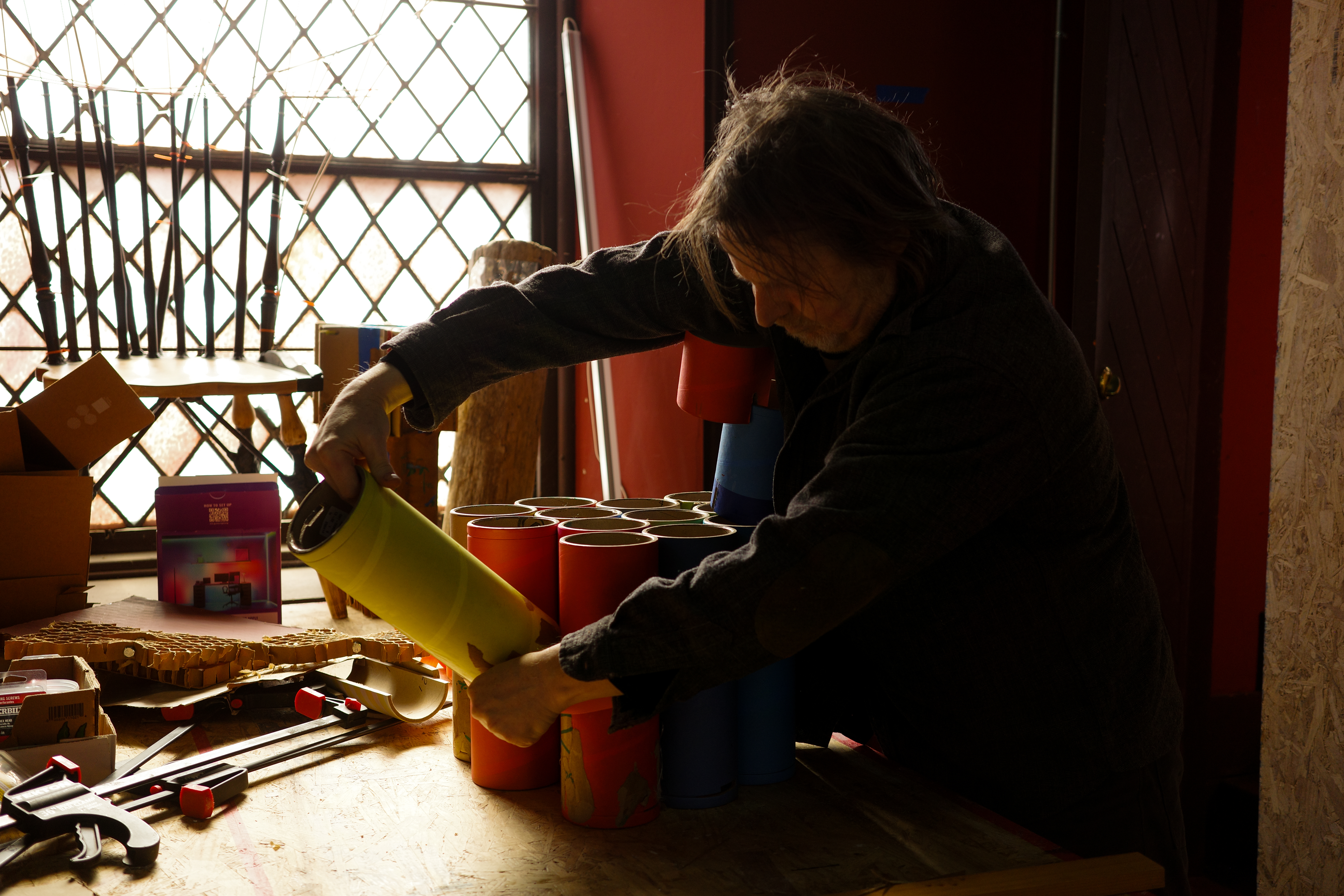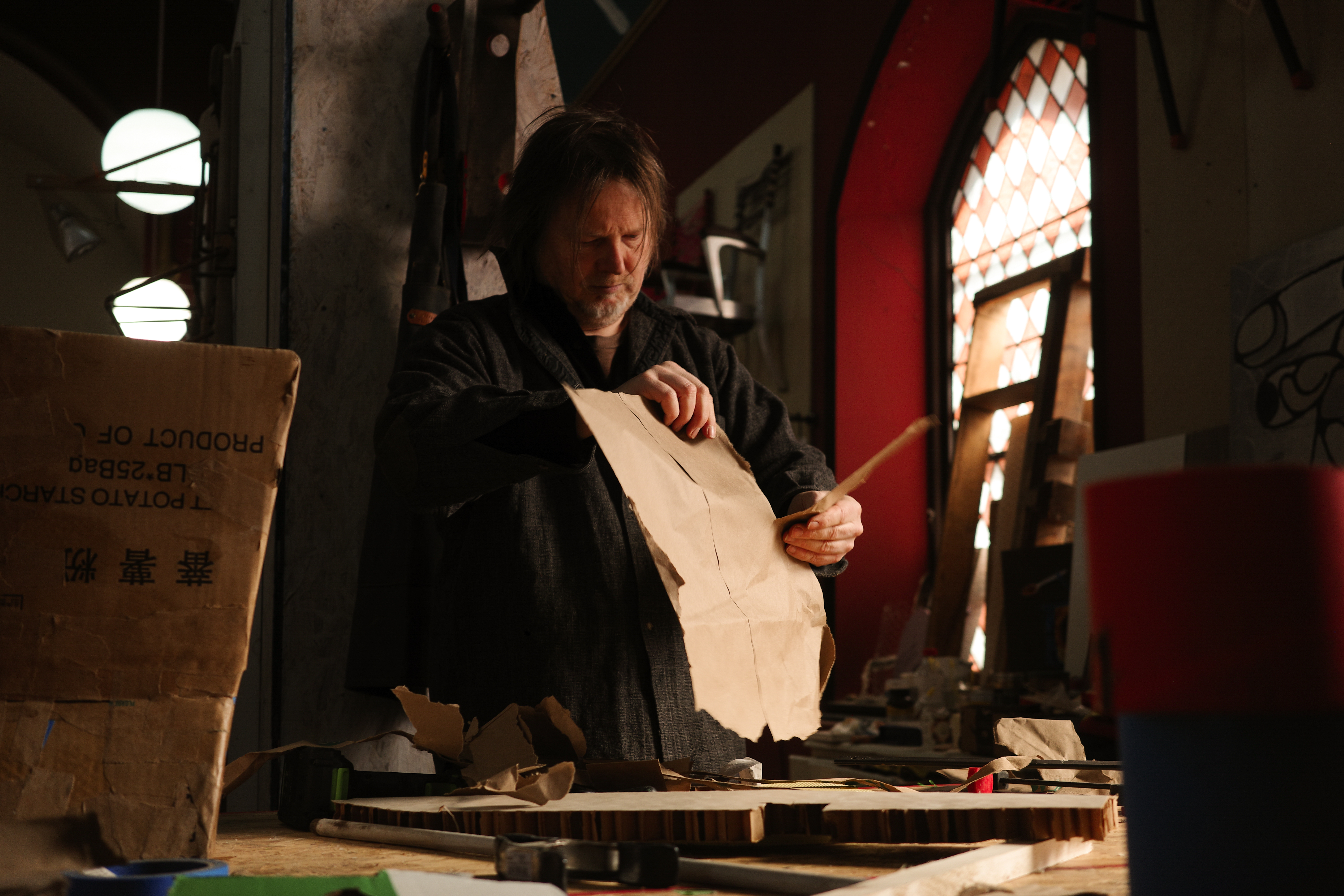Emerging from Rhode Island’s industrial legacy, Reharvest Repair approaches not a blank canvas, but artifacts of what was left behind—cracks, scraps, and fragments—to make something new. It challenges rapid production and reproduction—the unending generation of waste which marks this century. Born from an intersecting vision of Ayako Maruyama and Markus Berger, this project explores the resistance, reimagination, and complete reinterpretation of a material’s identity to improve architecture and design. Through evolving mapping tools, workshops, and material study, Reharvest Repair invites the community of Providence to embrace the existing and learn how to unmake the made. This photo series will walk through the studio space of Repair Atelier, a branch of the larger initiative led by Markus Berger which researches how to repurpose waste in physical architecture.
In 2024, the Rhode Island Resource Recovery Corporation (RIRRC) reported that only 7.8 percent of municipal waste was diverted from landfills, a half-percentage drop from the previous year. In sharp contrast, Warwick, the second most populous city in Rhode Island, had a 50.2 percent waste diversion rate in 2024 and the state had an average of 29.3 percent diversion. The failure to divert waste in Providence is contributing to an impending waste crisis in Rhode Island. The vast majority of waste generated in Rhode Island ends up in the state-run Central Landfill in Johnston, RI. The landfill takes in 750,000 tons of waste annually, roughly 10 percent of which is generated by Providence. RIRRC Corporation officials report that the landfill is likely going to run out of space in the next twenty years. While a 2024 grant awarded to Providence by the US Department of Agriculture will help transform Providence waste management, individuals and communities need to change their behaviors and perspectives to help reduce landfill waste.
Reharvest Repair exemplifies an intentional diversion and renewal of waste, a practice that the state of Rhode Island must learn from.
